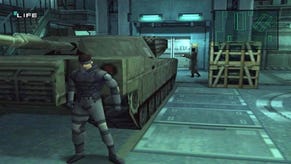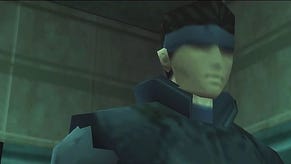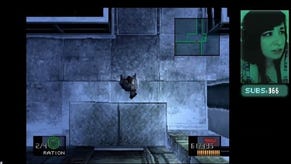Metal Gear Solid
Review - one of the greatest Playstation games finally makes it to the PC - was it worth the wait?
Back in early 1998 "Metal Gear Solid" was unleashed on the western world, a Playstation game which mixed stealth and action, solid gameplay and cinematic styling. It was a huge hit, both critical and commercial, and is arguably one of the best games ever released on Playstation.
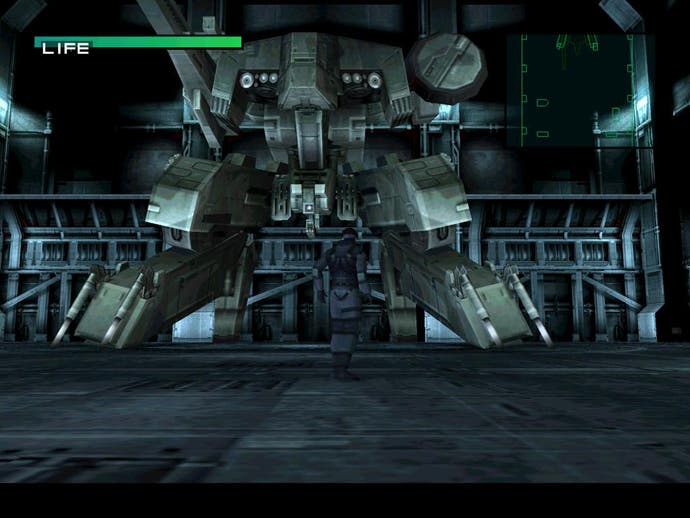
Original
Flash forward to the tail end of the year 2000, and Metal Gear Solid has finally come to the PC, thanks to Microsoft. As well as the full game, the PC version also includes the "VR Missions" add-on, which acts as a training mode and also makes a nice diversion when you get stuck in the main game, giving you literally hundreds of (very) short missions to get your teeth stuck into. It's taken two and a half years, but was it worth the wait? Has the game matured or just decayed with age? And will the console gameplay translate well to our big beige boxes?
As with the Playstation original, the game puts you in the shoes of Solid Snake, a genetically engineered secret operative called back to active duty to take on a group of renegade special forces troops who have take over a nuclear weapons disposal facility in Alaska. Of course, there is much more to it than that, and you soon find yourself caught up in a vast conspiracy which makes the X-Files look like wishful thinking, involving the government, the military, and big business.
What is the real purpose behind the mecha known as Metal Gear, and what is it doing in Alaska? Why did the special forces troops revolt, and who is their leader? Who are you, for that matter? And who, if anyone, can you trust? Throw in some love interest in the shape of a young and inexperienced female soldier caught up in the revolt, and add a touch of mystery in the form of a ghostly ninja whose true identity and purpose are unknown, and you have Metal Gear Solid...
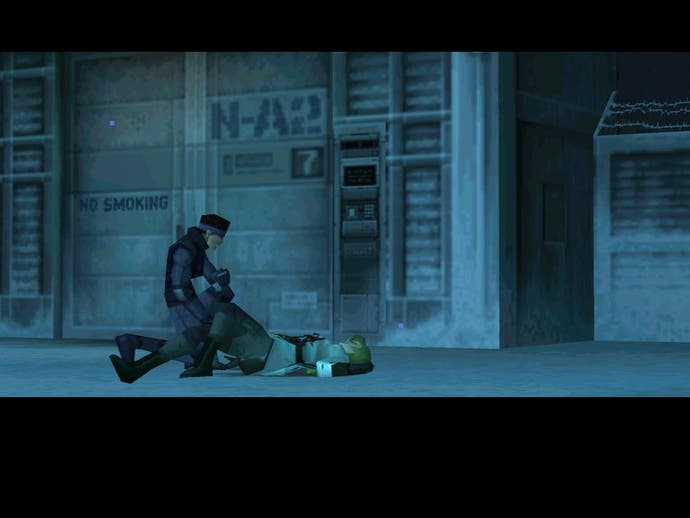
Slow, Slow, Quick Quick, Slow
The labyrinthine storyline is one of Metal Gear Solid's strongpoints, and you are kept guessing as to what is really going on and what the real motives are behind the various characters involved in the whole mess. Constant chatter on your "codec" (a personal radio system) from your support team back at HQ and other characters keeps you up to date, and in-game cutscenes mingle with FMV footage of nuclear weapons tests and genetic experiments to keep you on the edge of your seat.
In fact, Metal Gear Solid is really more of an interactive movie than an actual game. It took me about twelve hours to complete the game, and at least half of that time must have been spent watching cutscenes and listening to the incessant interruptions of the Colonel, Doctor Naomi Hunter and others on my codec. The dialogue can be rather long-winded at times, and even the final climactic battle is split up into three seperate sections by cutscenes, one of which is over fifteen minutes long!
The pacing is truly atrocious, and it seems like every time you get on an adrenaline high the game suddenly grinds to a halt to preach to you about the evils of nuclear war. Much as I sympathise with the message, being beaten over the head with it every hour or two with all the subtlety of a length of lead pipe soon starts to grate. On the Playstation this works because you are playing the game on a TV set and probably sat on your couch. Hunched in front of a PC monitor on a chair, the lengthy cutscenes just seem out of place.
On the bright side, apart from occasionally bludgeoning you with the moral of the story (war is bad, nuclear weapons are bad, don't trust the military), the cutscenes and dialogue are excellent by video game standards, and the voice acting is generally top quality. The only let down is the big villain, Liquid Snake, who has the misfortune to sound just like the well-spoken criminal from The Simpsons, making it rather hard to take him seriously. It's also rather disturbing that you have to kill him five times before he finally gives up, and yet apart from a few scratches he still looks to be in perfect shape right to the end. Even James Bond doesn't look that good after being blown up (twice), dropped from fifty feet up in the air, shot with a heavy machinegun, and then rolled over in a jeep at high speed...
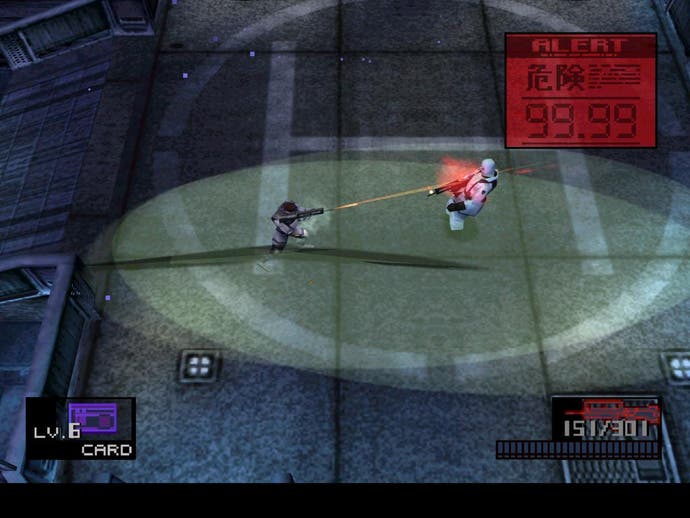
Game
There is a game in between all of those excellent cutscenes though, and the good news is that it's really rather good. Although you have a wide variety of weapons to use and can even resort to fisticuffs, the focus is very much on stealth, making this a kind of third person "Thief : The Dark Project" with guns.
Trying to blast your way through the game is likely to end in disaster, and so the best approach is to try and avoid any contact with the enemy, edging your way along walls, crawling through ventilation ducts, and hiding in dark corners while guards pass you. The soldiers guarding the Alaskan base were genetically engineered to give them improved eye sight and hearing according to the storyline, but luckily for you the batch you have come up against must have been the drop-outs, because you can sneak right past them without too much trouble. You will also find security cameras, infra-red sensors, trap-doors and automatic sentry guns blocking your way, not to mention plenty of locked doors which you will need different levels of security key cards to open.
The range and field of vision of the guards and security cameras are marked out for you on a little radar display in the top right of the screen, which allows you to judge when you can sneak past them and when to hide. The real master stroke is that once you have been spotted your radar system will be jammed, and you have to run and hide, avoiding detection until the guards give up looking for you and go back to their regular patrols. The result is positively nerve-shattering.
Of course, you can choose to try and take down the guards, but almost as fast as you can kill them more will appear from the edges of the maps, making any pitched battles with the terrorists dangerous. On the bright side you do have a full armoury to play with, including heat-seeking and guided missiles, frag and chaff grenades, pistols and assault rifles, and even a sniper rifle. You also have food rations to replenish your health, and a range of other items including drugs to make your aim steadier when using the sniper rifle, and a pair of binoculars which allow you to zoom in and observe distant enemies.
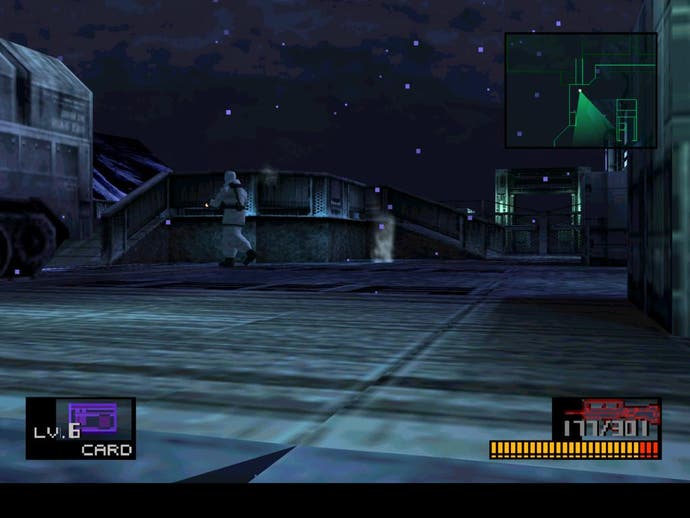
Dated
The game is normally played from a third person view, looking down on your character from above. At times this switches to fixed pre-scripted cameras to give certain locations a more cinematic feel, and your view will also shift if you back up against a wall or crate, allowing you to see what is going on behind you and watch for guards passing by.
Also included in the PC version is a first person view which was previously only available in the Japanese "Integral" release of Metal Gear Solid, after you had already completed the game once to unlock it. The first person view is very useful at times, but this is no Quake - the controls are faithful to the game's console roots, which means no mouse look and some rather awkward controls designed to be used with a joypad, and a bug means that you can't pick up any items without switching back to the standard third person cam. The game also looks pretty awful from the first person view at times.
Which is perhaps the biggest problem - Metal Gear Solid was released in the hey-day of the Playstation. Two years ago it would have looked good even on a PC, but in these days of universal 3D acceleration it all looks rather dated. Characters are chunky, looking like a cubist's nightmare, and their textures are fairly low resolution. Animations frequently stretch the characters out of shape, and there's no lip-synching or facial movement of any kind during the many in-engine cutscenes. The maps lack detail as well, and the whole game seems to have been ported pixel for pixel from the original Playstation version.
Which is a shame, because your PC is being wasted. Metal Gear Solid ran silky smooth at its maximum resolution of 1024x768 with 16 sample anti-aliasing on my GeForce 2 graphics card, showing that almost none of its rendering power was actually being used by the game. Given that the base in which the game takes place is very small and the number of characters limited, you would have thought that Microsoft could quite easily have re-built the entire game to use more polygons and higher resolution textures. As it is, this is a faithful recreation of the Playstation original, but apart from a slightly more flexible save game system and some improved lighting effects, it really doesn't add anything to take advantage of the vastly superior processing power of modern PCs.
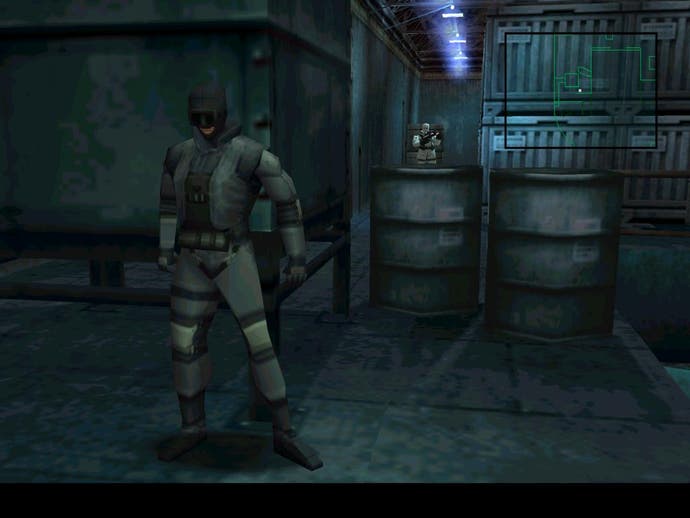
Conclusion
Metal Gear Solid for the Playstation was undoubtedly a great game, but the passing of almost three years and the transition to the PC has somewhat dented its appeal. It's also rather obvious that the developers realised towards the end of the game that it was going to be far too short, resorting to the old trick of forcing you to backtrack across large portions of the game world (no less than three times!) to make it seem longer.
At the end of the day though, Metal Gear Solid is still a great game for all of its flaws. The graphics are poor by today's standards, the cinematics dominate the game, and the controls can be awkward at times, but the plot and characters are truly involving, the music, voice acting and sound excellent, and the gameplay still shines through.
If you already own a copy of the Playstation original then buying it again on PC is a little pointless, because apart from the first person view and higher resolution graphics nothing is really added. But if you haven't played Metal Gear Solid before then it's certainly well worth your money to see how the other half live...




.png?width=291&height=164&fit=crop&quality=80&format=jpg&auto=webp)
